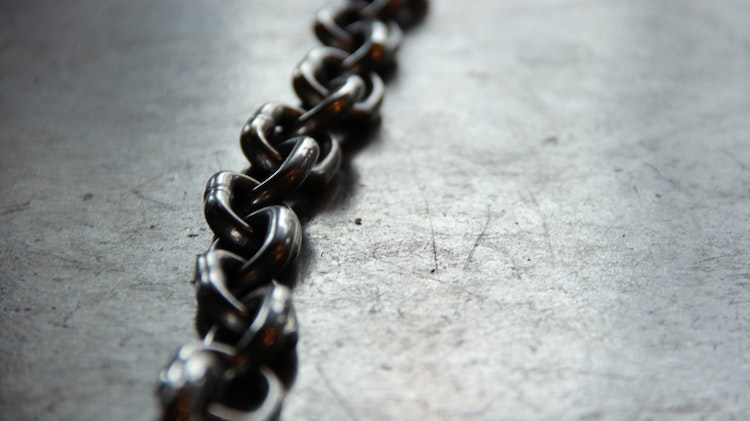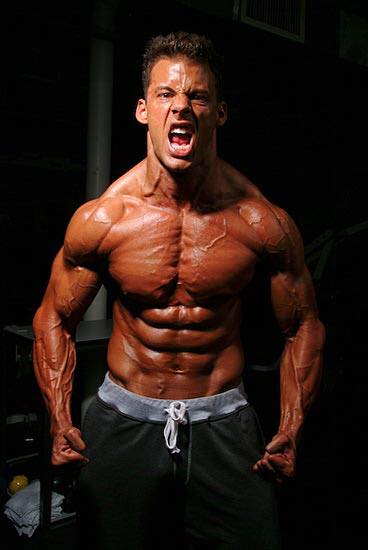How to Get a Bigger Bench Press: Using Chains
Looking to take your strength and muscle development to the next level? Or are you looking for extra athletic ability and explosive power? Either way, weight lifting chains are where it’s at! By attaching chains to barbells, dumbbells, and even machines and cable attachments, you can completely change the way exercises work. Read on to find out how can use these simple implements to jack up your training!
Changing the Strength Curve

In every full range weight lifting movement, you’ve got what’s called the “strength curve.” Simply put, the strength curve is the reason why an exercise is hardest at the lowest or most stretched position, and easiest at the highest or most contracted position. Why is it easier to bench at the top than off your chest? Why is it easier to do a half squat than a full, rock-bottom squat? The strength curve!
Now, if you’re training properly, you should usually be doing full-range movements. If you want full muscle development and total-body strength, working through a full range of motion is almost always more beneficial than doing half-reps with too much weight. However, you still want a way to accommodate the strength curve and really overload your muscles as exercises like bench presses, deadlifts, and squats get easier near the top – that’s where weight lifting chains come in!
Using Weight Lifting Chains

Let’s say you usually work with 225 pounds on the bench press for 6-8 reps. If you’re like most people, this lift is hardest coming off your chest and far easier at the top near lockout. To really make the movement harder, attach 20-40 pounds of chains on each side! Make it so that almost all of the chain is on the floor when the bar is at chest level, and so that almost all of it comes off the floor at lockout. As you push through the lift, the chains will rise off the floor, adding more and more weight to the bar!
If you set this up right, you should still be able to get a few good reps with your normal working weight. As the chains come off the floor and into play, the added weight will cause the lift to remain challenging all the way through the range of motion. Whereas a normal bench press might primarily work your chest and shoulders, the added challenge of more weight at the top of the movement will really torch your triceps!
You can use basically the same application with tons of other movements. Usually you see powerlifters adding chains to their squats, bench presses, and deadlifts, but you can use them with almost any exercise! Add some extra challenge to your dumbbell presses and rows by attaching chains to each dumbbell handle. Make curls and extensions harder, too. You can even add chains to your body to make bodyweight movements like pull-ups and dips harder and more beneficial!
Explosive Power

While weight lifting chains can be great for pure bodybuilding purposes, a lot of lifters use them because they are great for making you FASTER at lifting weights. Remember from physics class, force is equal to mass times acceleration. The better you can use your muscles to accelerate a weight, the more you can lift! And of course, being able to lift more will translate into greater muscle gains on down the line.
The reason that chains are so great for building speed is that the added challenge throughout the range of motion FORCES you to push as hard as you can. Sometimes even the best of lifters get lazy and only strain through the hardest portion of a lift. You’ve probably done this yourself! You’ll get a heavy squat past that hard part at the bottom and then keep going just hard enough to make it to the top.
When you lift like this, you still complete your lifts, but you didn’t get the maximum training effect from doing them! Whether or not you’re using chains, you want to push as hard as you can throughout the entire range of motion. When you’ve got chains on the bar, adding more and more weight as the lift gets “easier,” you simply can’t help but do this. Once you go back to lifting straight weight (no chains), you’ll be astounded at how fast you move the iron, and how each rep seems to just “snap” at the top as you power through your sticking points to lockout.











